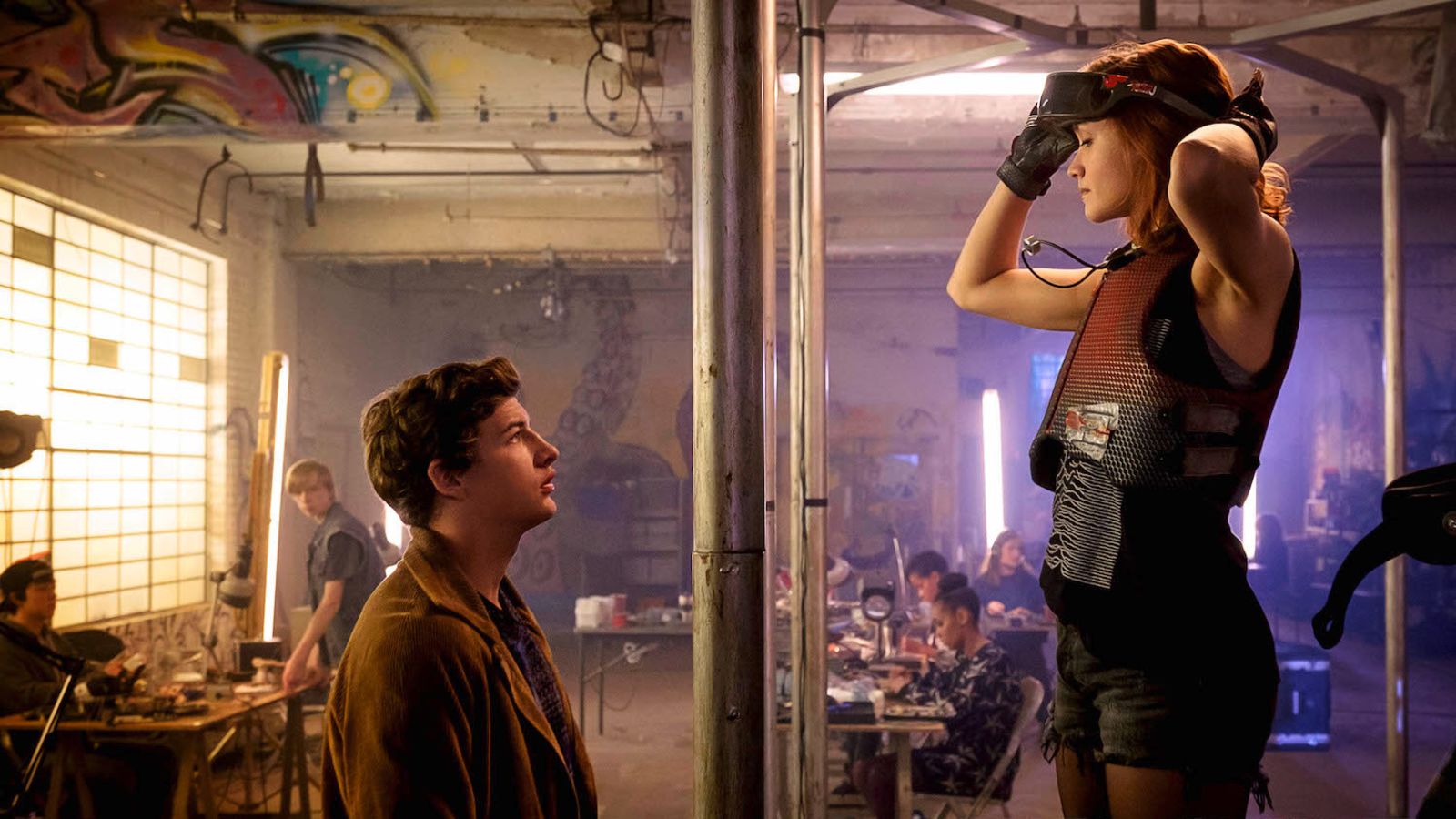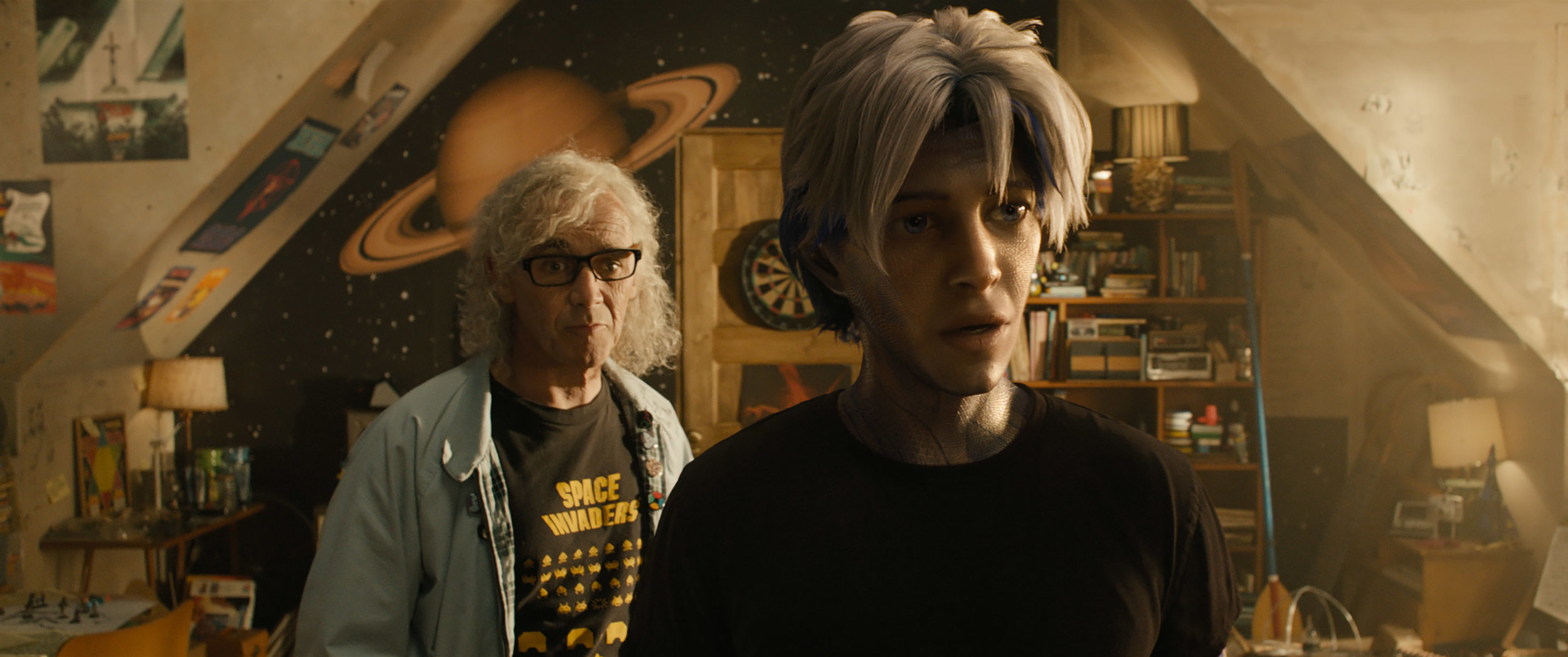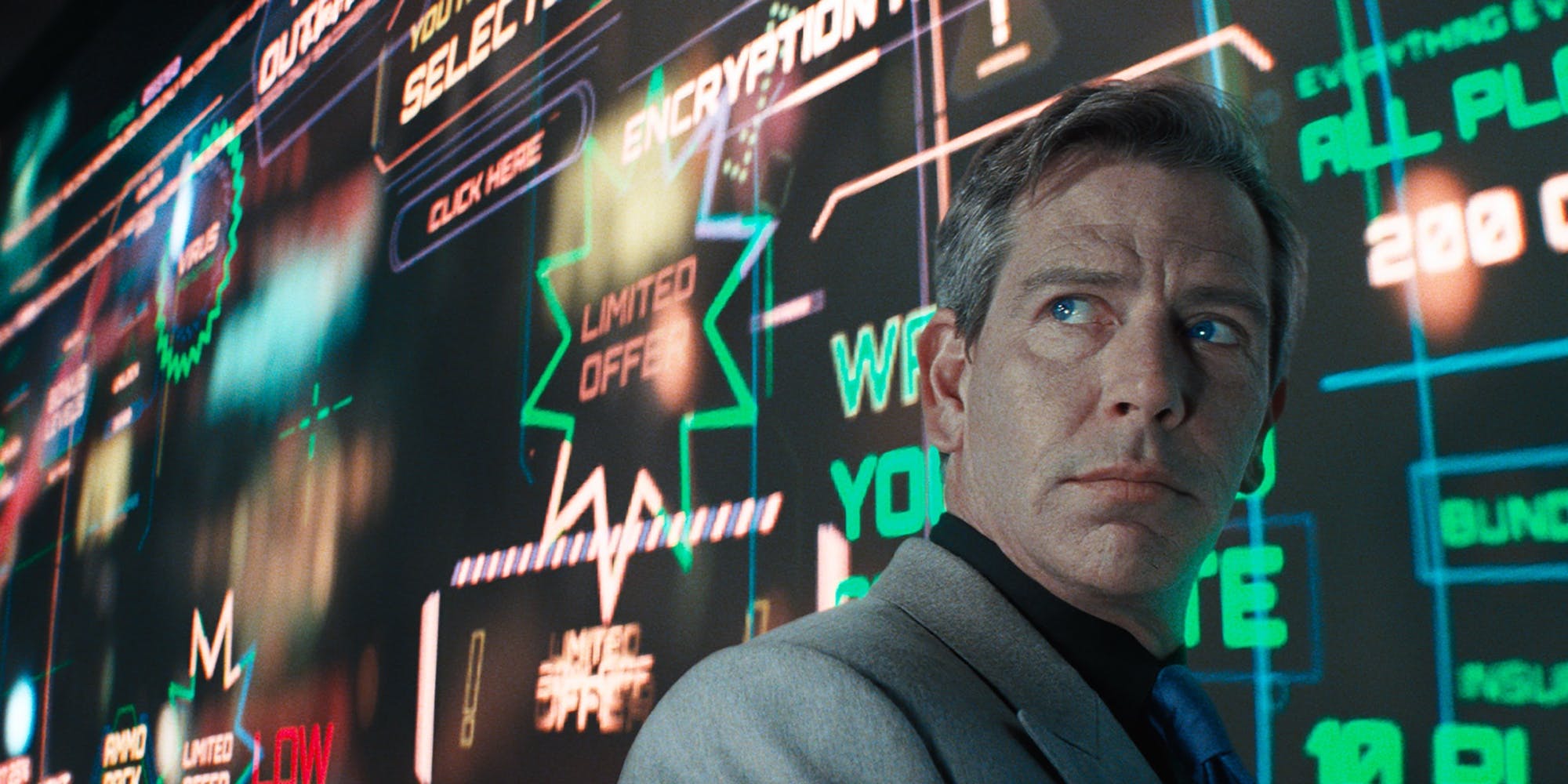REVIEW: 'Ready Player One' beats the game by scrubbing away the grime
Tye Sherdan and Olivia Cooke star in Ready Player One, directed by Steven Spielberg.
Despite all the doomsaying that certain hand-wringing activist groups engage in, video games haven’t caused much real-world damage yet. There’s no scientific proof that immersive, violent games inspire people to pick up a weapon and wreak destruction in meatspace. And we certainly don’t see the majority of the population getting obsessed with a singular online destination and losing themselves in it. Put another way, we’re still a long way off from the future imagined in Ernest Cline’s 2011 novel Ready Player One: a blighted world where the only escape – and means of social advancement – is in an infinitely sprawling game called the OASIS.
Cline lines up a stunning roster of pop-culture ephemera (almost every geeky icon you could name) for the game in the novel, and so it was almost a foregone conclusion that Hollywood would earmark the book for a film adaptation – provided the licensing rights got figured out. Figured out they were, and with none other than the progenitor of some of those geek icons at the helm: Steven Spielberg. But in the run-up to the film’s release, the question that gripped the discussion of the film wasn’t how cool it would be to see such a huge mashup of nerdery onscreen, but how the movie would deal with the grittier, sometimes revolting aspects of the book, of which there are many.
Make no mistake: the world of Ready Player One (both novel and movie) is a disturbing one. Most of the people in the book are semi-permanently chained to the VR visors and haptic gloves used to access the OASIS. Some of them do it to forget about the depression of the real world, others try to grind profit and fame from the system. And then there’s the people confined to “loyalty centers”, glorified debtor’s prisons. Here, people who have run out of money and options are enslaved by the omnipresent corporation Innovative Online Industries (IOI), which seeks to take control of the OASIS for itself.
Wade, as his OASIS avatar Parzival, confers with the game's creator James Halliday (Mark Rylance).
Then there’s Cline’s protagonist, Wade Watts, who practically lives in the OASIS. Wade is on a quest to find a fabled Easter egg hidden by the game’s creator, which will grant the finder control of the game and the company that runs it, along with a $500 billion fortune. But the problem with Wade is his objectively unhealthy obsession with the OASIS and the pop culture references that point the way to the egg. Wade is described as having watched certain movies and TV shows hundreds of times each. He can recite entire scripts from memory. And more troubling still, when a girl he likes rejects him in favour of her career, he engages in a sort of petulant, stalkerish behaviour that would get most normal people arrested.
It’s this last point that left a bad taste in many readers’ mouths, to say nothing of other creepy sequences throughout the source material. So what was Spielberg and his team to do? Arguably, there are two routes: engage with Wade’s freaky conduct and lay his flaws bare, or trim out the objectionable stuff and make a piece of entertainment. Spielberg and screenwriter Zak Penn, perhaps unsurprisingly, go with the latter. So was this the right move, or a missed opportunity to drag Cline’s problematic ideas into the light?
I’m of two minds on the result. On one hand, by cleaning up the story and making Wade (Tye Sheridan) less obsessive, the film effectively minimizes the unlikeable habits and numbing pop-culture references from the book. Sheridan’s Wade looks a lot more like the starry-eyed Spielberg characters we recognize from the filmmaker’s other works. But on the other hand, in the absence of the borderline-disgusting fandom, the movie simultaneously loses the chance to critique this kind of behaviour, as well as defusing the charm of a hero with such an eccentric skill set.
Ben Mendelsohn as Nolan Sorrento, the greedy CEO of Innovative Online Industries.
In other words, the very thing that makes Ready Player One more palatable also makes it less interesting. This also applies to Wade’s love interest, Samantha (Olivia Cooke), known as Art3mis in the OASIS. Samantha’s main motivation to spurn Wade in the film is quickly wrapped up as her concern over stopping IOI from destroying more lives like her father’s, who died in one of the company’s loyalty centers. The relationship between Wade and Samantha develops in a relatively unremarkable way from this point, and little attention is paid to what might cause Samantha to share Wade’s feelings, or to what Samantha thinks about anything.
One great improvement offered by the film is to the pop culture references, which are pushed to the periphery. There’s definitely plenty of scenes of fan-favourite characters clashing in battle – for people who get excited about that kind of thing – but it doesn’t dominate the plot. This makes the film feel less like someone bragging about how much they know about a particular topic, and opens up the premise to a broader audience. It keeps the film from acting like a gatekeeper to culture, which we see far too often elsewhere: people suspicious of casual or uncommitted fans, who take it upon themselves to quiz people on their fan knowledge, to prove they belong in the club.
Maybe it’s fitting that the people who will get the most out of Ready Player One are the ones who want to invest the time in watching it on repeat, keeping their eyes out for every glimpse of recognizable content from other franchises. I believe that the root of Cline’s book was an innocent effort to promote and encourage the fan experience, even if he took it to a poorly-justified extreme. So for Spielberg to deliver a tamed version of that is perfectly fine. However, while I’ve been known to absorb my share of pointless geeky trivia, I have too many new films and unseen classics to see; to get too caught up in identifying every inch of Ready Player One means you weren’t really watching.
Ready Player One gets two and a half stars out of four.
Stray thoughts
A couple of the filmmakers’ additions for the film do a vastly better job than Cline at explaining (visually) how the OASIS works: the car race in the first act, and the riff on The Shining.
Ben Mendelsohn was a strong choice for IOI’s Nolan Sorrento; a great blend of villainy and bemused non-understanding of geek culture.
A lot of the real-world scenes in the second half of the film brought up far too many questions, like how Samantha’s “resistance” organization works, or how Aech (Lena Waithe) tracked down Wade.




